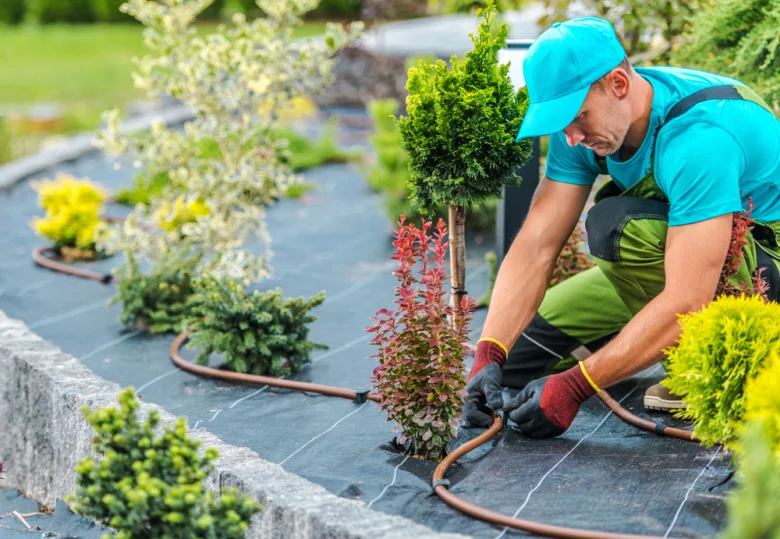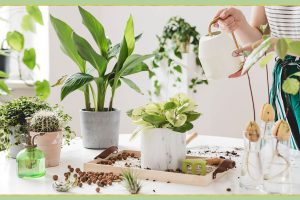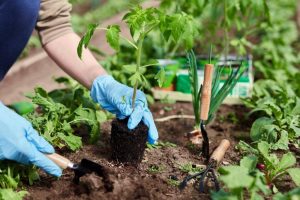In our bustling city life, there is nothing as healing as nurturing a beautiful outdoor garden. The rewards are enormous with the bright colors, fresh scents, and sense of achievement that come from cultivating your own green paradise. However, realizing this dream garden requires more than just planting; it also takes hard work. It requires an in-depth understanding of outdoor plant care techniques.
1. Choose the Right Plants
Before you get started, choosing the right plants for your garden is crucial. Research what types of plants thrive in your specific climate, soil type, and sunlight conditions. Native plants are often a good choice because they are adapted to your area’s unique ecosystem.
2. Preparing the Land
Healthy soil is the basis of a flourishing garden. Perform a soil test to determine pH and nutrient levels. Depending on the results, you may need to amend the soil with organic matter, compost, or specific fertilizers to create the best environment for your plants.
3. Correct Planting Techniques
When planting, make sure you dig the hole deep enough to comfortably accommodate the plant’s roots. Carefully remove the plant from the container, taking care not to damage the roots. Water the plant immediately after planting so that the soil around the roots can settle.
4. Watering
Proper watering is essential for plant health. Overwatering can cause root rot, while flooding can cause stress and wilt. Research the water needs of specific plants and develop a regular watering schedule. Use mulch to retain moisture and reduce weed growth.
5. Pruning
Regular pruning and trimming help keep your plants in shape and healthy. Remove dead or diseased branches, flowers, and excess growth. Pruning promotes new growth and flowering in many plants.
6. Pest and Disease Management
Be alert to diseases and pests that can damage your plants. Early detection and treatment are critical to prevent widespread damage. Consider using organic or chemical treatments if necessary, but be careful not to harm beneficial insects.
7. Fertilization
Plants need nutrients to thrive. Use a balanced fertilizer or an organic alternative to provide essential nutrients such as nitrogen, phosphorus, and potassium. Follow recommended fertilizer amounts to avoid over-fertilization.
8. Sunlight and Shade
Different plants have different sunlight requirements. Make sure you understand the sunlight needs of your garden residents and plan accordingly. Monitor changing light patterns throughout the year and adjust the plant’s layout as necessary.
9. Weeding
Weeds compete with plants for nutrients and water. Remove weeds regularly to reduce competition and keep garden beds tidy.
10. Observe and Learn
Finally, observe your garden regularly. Pay attention to how your plants respond to care and adjust your techniques accordingly. Gardening is a continuous learning process and every garden is unique.
11. Seasonal Maintenance
Different seasons bring unique challenges and opportunities for your garden. During the colder months, consider covering or moving sensitive plants indoors to protect them from frost. During the summer, be prepared for your plants’ higher water needs and possible heat stress. Adjust your care routine to accommodate these seasonal changes.
12. Sustainable Gardening
In today’s environmentally conscious world, consider adopting sustainable gardening practices. Use rain barrels to collect rainwater for irrigation and choose native plants that require less water and support local wildlife. In addition, composting food waste and garden waste naturally enriches the soil.
13. Garden Design
A well-thought-out garden design not only increases the beauty but also makes maintenance easier. Plan your garden layout taking into account factors such as plant size, growth patterns, and color combinations. A well-designed garden is not only a pleasure to maintain but also easier to maintain.
14. Community and Online Resources
Feel free to ask for help and advice from garden enthusiasts in your community or online garden forums. Sharing experiences and learning from others is valuable in mastering outdoor plant care techniques. You may discover innovative tips and tricks that will take your gardening skills to the next level.
15. Patience and Perseverance
Remember that gardening is a journey, not a destination. You may encounter challenges along the way, such as unexpected pests, extreme weather, or plant diseases. The key is to be patient and persistent. Gardening teaches us the rewards of resilience and perseverance as we see our efforts pay off over time.
Conclusion
All in all, mastering outdoor plant care techniques is a satisfying journey that rewards your senses and content creation goals. By choosing the right plants, cultivating healthy soil, and following best practices for planting, watering, and maintenance, you will create a garden that will not only thrive but also be a valuable resource for others interested in gardening. Remember that gardening is a constant learning experience, and if you are patient, persistent, and open to new knowledge, your garden and your contents will flourish.
FAQs
1. How often should I water my outdoor plants?
Watering frequency varies depending on plant type and environmental conditions. In general, it is best to water deeply and less frequently to promote deep root growth. Monitor soil moisture and adjust accordingly.
2. When is the best time to prune your plants?
For most plants, pruning is usually done during the dormant season, usually in late winter or early spring. However, some plants require occasional pruning throughout the year to remove dead or diseased growth.
3. How do you prevent diseases and pests in the garden?
To prevent pests and diseases, remove dirt and dead plant material and maintain good garden hygiene. Practice crop rotation, use organic or chemical treatments as necessary, and encourage beneficial insects to control pests.
4. What should I do if my plant is not blooming or growing as expected?
Various factors influence the growth and flowering of a plant, such as sunlight, soil quality, and good care. Make sure your plants are getting the right amount of light and nutrients, and consider adjusting their position or correcting any problems.
5. What is sustainable gardening and why is it important?
Sustainable gardening includes environmentally friendly practices such as conserving water, reducing the use of chemicals, and supporting local biodiversity. It is vital to minimize your garden’s impact on the environment and promote the long-term health of your garden and the planet.



